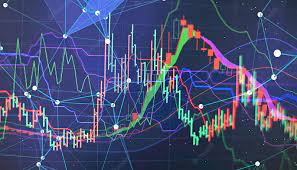CFD trading, or contracts for difference trading, is a financial tool that allows investors to speculate on the price movements of various assets. Unlike traditional trading, CFD trading does not require investors to hold the underlying asset. Instead, they can profit from price fluctuations without owning the asset itself. Cfds offer a variety of benefits for investors, including flexibility, leverage, and the ability to short sell. In this blog post, we’ll dive into the basics of CFD trading, including how it works, the benefits and risks, and how to get started.
How Does CFD Trading Work?
CFD trading works by allowing investors to take advantage of price movement in a wide range of assets. These assets include stocks, commodities, currencies, and indices. When an investor opens a CFD trade, they enter into a contract with a broker that mirrors the underlying asset’s price movements. If the asset increases in value after the trade is opened, the investor can profit by the price difference between the opening and closing of the trade. If the asset decreases in value, the investor will incur a loss.
Benefits of CFD Trading
One of the most significant benefits of CFD trading is the ability to trade with leverage. Leveraged trading allows investors to magnify their potential profits by increasing their buying power. Additionally, Cfds are highly flexible, allowing investors to choose from a wide range of assets and markets. Another critical advantage of CFD trading is that it allows investors to speculate on market trends regardless of whether the global economy is in good shape or not. Besides, Cfds can be easily shorted, allowing investors to profit from falling markets as well as rising ones.
Risks of CFD Trading
The primary risk of CFD trading is leveraged trading, which is a double-edged sword. Although leveraged trading can magnify profits, it can also magnify losses and put investors at risk of losing more than they initially invested. Additionally, markets can be unpredictable and volatile, and inexperienced traders are at risk of making poor trading decisions due to fear or greed. As such, investors must exercise caution and consider the risks involved before jumping into CFD trading.
How to Get Started with CFD Trading
Before diving into CFD trading, investors should ensure that they fully understand the risks and benefits involved. Once they have a good grasp of the fundamentals, they can open a trading account with a broker and start trading immediately. Most brokers offer demo accounts that allow investors to practice their trading strategies with virtual money and get accustomed to the trading platform before investing real money. In addition, investors should consider setting risk management policies to mitigate potential losses, including stop-loss orders, which automatically exit trades when a predetermined amount of loss is reached.
Conclusion:
what is cfds trading is a powerful financial tool that offers investors a wide range of benefits, including flexibility, leverage, and the ability to short sell. At the same time, inexperienced traders can fall into the pitfall of leveraging themselves too much, leading to devastating financial losses. It is essential to learn the risks involved and trade sensibly with risk management policies in place before diving into CFD trading. By doing so, investors can take advantage of the opportunities offered by CFD trading and potentially earn significant returns on investment.



